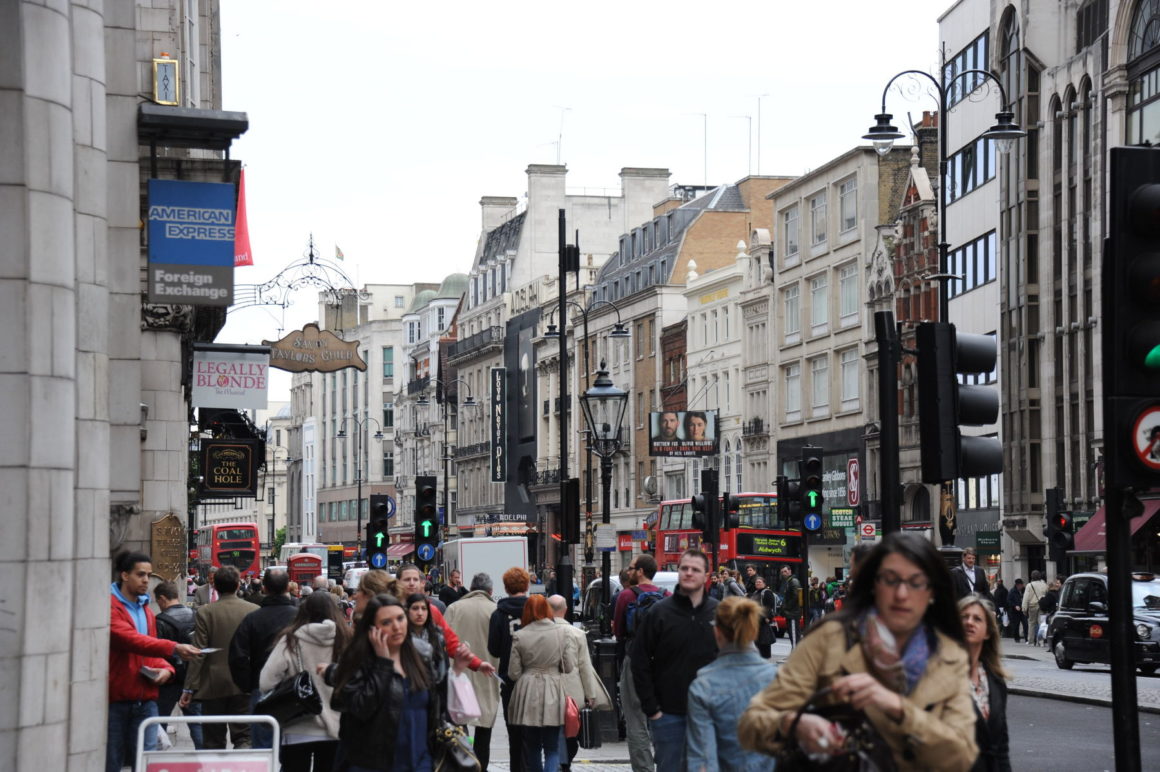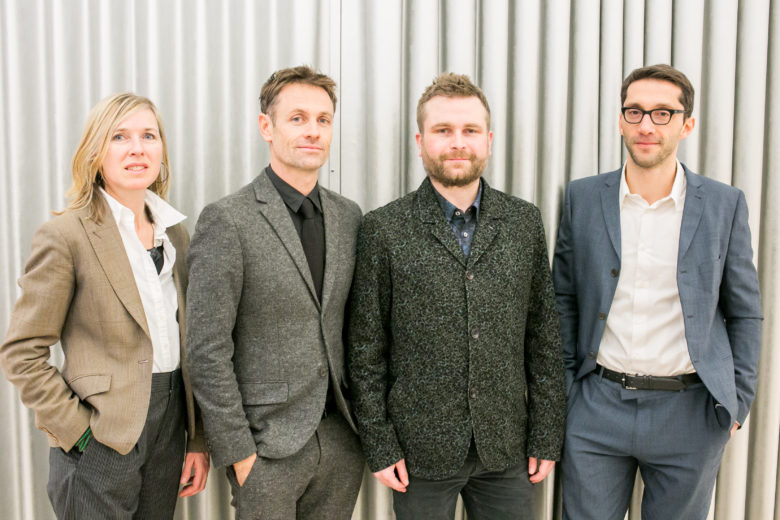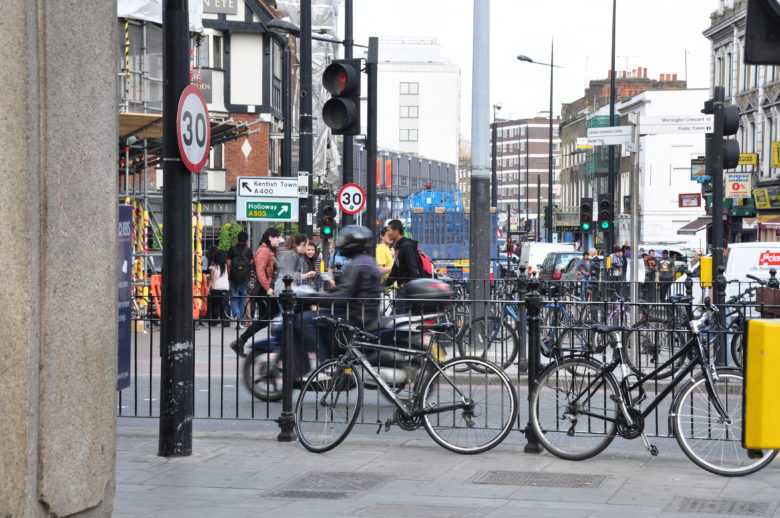
Neuroscientist Dr. Andrea Mechelli is the principal investigator for the pilot phase of Van Alen’s Ecologies of Addiction project. He and his team recently presented their preliminary findings at the 13th International Conference on Urban Health April 1—4 in San Francisco. Seizing the opportunity to check in with the team at an important time in their research process, Van Alen Director of Research Anne Guiney spoke with Dr. Mechelli about the process, progress, and challenges in conducting behavioral research in an environment as multifaceted and layered as a city street.

Ecologies of Addiction is part of Van Alen’s broader interest in understanding the ways we are affected by our environments. We launched that inquiry by looking at the enormous social and economic challenges presented by addictive behaviors, and delving into possible connections between these behaviors and the environments in which they occur. The long-term goal of this initiative is to gain a better understanding of these complex relationships, and to use that information to empower designers and citizens alike to improve our cities and environments.
In partnership with the Sustainable Society Network+ at Imperial College London, Van Alen released a Call for Proposals in 2014, and selected Dr. Mechelli and team to develop the pilot phase of Ecologies of Addiction.
AG: Can you discuss the research tool you and your team developed, your methodology, and the questions you are tackling in this pilot study?
AM: Our environments have an enormous impact on how we feel, how we think, and how we behave, and it is surprising how little study there is on this. However, when studying the urban environment and its relationship to well-being and behavior, we must acknowledge that we are all individuals with different histories and different personalities.
We decided to address these questions by developing an app called UrbanMind, which uses a methodology called ecological momentary assessment: At random points of the day, the app makes a sound and participants are asked to answer questions.
Some of these questions relate to the surrounding environment: Do you see trees? Is it noisy? Can you open a window? Some relate to how you feel and what you are doing. For example: Are you online? Have you been drinking?
The idea is to acquire multiple measurements of a person’s environment and their feelings and behaviors, in order to try to understand the relationship between the two.
Obviously, when we ask people if they can see trees – that is a subjective assessment of their environment. So we also acquire objective information about the environment by geotagging: The app acquires specific information about where someone is located when he or she completes an assessment. The goal is to look at both the subjective description of the environment and objective information about that location.
In our preliminary analysis, the strongest relationship so far has related to nature: When people could see trees, their level of reported well-being was higher. There was also an effect of noise: With higher levels of noise, the level of well-being was lower. In this case, there was an interesting interaction with personality: The people who seemed to be more impulsive (based on the impulsivity scale that we used) also seemed to have a stronger response to noise.

AG: That’s interesting – was that surprising?
AM: Well, if someone has a personality which is quite susceptible to stress, environmental stresses will have a greater impact.
AG: So impulsivity is, in a sense, reactivity.
AM: Yes, we can think of it as reactivity, but obviously personalities are very complex, and there are so many aspects of personality that one can look at: Impulsivity is just one of them.
But while I would say these results are not entirely surprising, they also show that the methodology works in principal. It is also good to have an evidence base to be able to say when people see trees or can hear water, their sense of well-being is higher. It’s good to be able to have objective data that shows this.
The next stage is to perform a full study on a much larger sample because there are so many aspects of the environment one could look at, so many aspects of personalities, and to do this meaningfully you need a very large amount of data.
AG: What qualifies as a meaningfully large amount of data in a project like this?
AM: It generally depends on the effect size: If you have a large effect, you need relatively little data. It also depends on how many variables you are looking at. When you have many variables, then you need to be more stringent and conservative with your statistical inferences. It is based on the nature of the study.
In this study, we are looking at alcohol use. We are looking at internet use for recreation and work (which are considered separate variables). We are looking at well-being. For well-being, there is a single score that is based on several questions.
AG: Is that well-being score used broadly across social science research?
AM: Yes, it has been validated in studies of hundreds of thousands of people.

AG: Could you just walk us through the factors that go into that score and the thinking behind it?
AM: It is a composite measure, and the questions include: How stressed do you feel right now? Do you feel able to make up your mind right now? How clear do you feel about your ability to make decisions? Do you feel connected with other people right now?
Of course there are multiple scales to measure well-being, and ultimately, the scales are all developed by people who have an idea of what well-being should be. So in some cases, people place greater emphasis on relationships, whereas others are based more on economic aspects. But there is a growing consensus across the research fields, and one of the reasons I chose this scale is that it had been validated in the UK by about 200,000 people.
AG: Can you tell me about your findings on internet use and alcohol use?
AM: This could be due to the fact that the sample size was small and, after all, this was a pilot study, but we didn’t find an effect size with statistical value [regarding internet and alcohol use]. There is something there, but the effect size is not very large so we need more data to compensate for that. If we include more participants, we could find something.
AM: My guess would also be that the relationship is going to be complex because it is probably going to be mediated by personality. So, maybe certain people will drink more or less, depending on the surrounding environment. And because then we are looking at personality, drinking behavior, and environment, we are going to need more data to map this properly.
AG: Can you frame this project within the larger conversation about public health and the connection between spaces and health outcomes?
AM: People have been interested in the connection between the environment and health for a long time, and there is some really good work being done. What’s shifted now is that with smartphone technology, we have the potential to acquire a large amount of data across multiple geographical locations. We can also collect it in real time, and in the real world: People don’t have to come to a lab to answer questions, they can answer in the midst of everyday life.

AG: One of the things that intrigued me is both the incredible wealth of new technologies and data sets we can use in researching these questions, and the need to control the variables as much as possible: There’s so much going on as the person is walking down a street! As a neuroscientist, how do you think about trying to sift through that “noise”, or do you have to accept a certain level of squishiness and imprecision?
AM: You have to accept that the data will be noisy. But if one factor has an impact, like being indoors versus outdoors, for example, you should be able to detect that despite all the other factors. Basically you have to assume that all these other factors will be evenly balanced between indoors and outdoors, because if you have other variables that co-vary with your variable of interest, then when you see an effect on the result, it could be this other variable and not your variable of interest. So you have to make certain assumptions.
I would say it’s a common problem in science: The data is often very noisy, and you need to average lots of observations to detect an effect.
AG: What is the current thinking on distinctions between an addictive behaviors like drinking or smoking and one like compulsive shopping or gambling?
AM: The mechanism is thought to be the same: The dopamine system, or the reward system in the brain, is not working in the normal way. So these individuals cannot control themselves, and they will need more reward over time. The amount of stimulus that was enough to start with is no longer enough. They need more and more and more.
AG: What made you focus on internet use and alcohol consumption?
AM: Well we thought it was a feasible way of looking at addictive behavior. We decided to choose two behaviors that are very, very common and that also are on a continuum: At one end of the spectrum, some adults rarely engage in these behaviors, while for people at the other end, it is a regular behavior. And we thought that to a certain degree, everyone could relate!
The London-based research team is continuing to gather data from volunteer participants. If you would like to participate, or have questions about the project, contact us. You can also download the UrbanMind application here. More results coming soon!